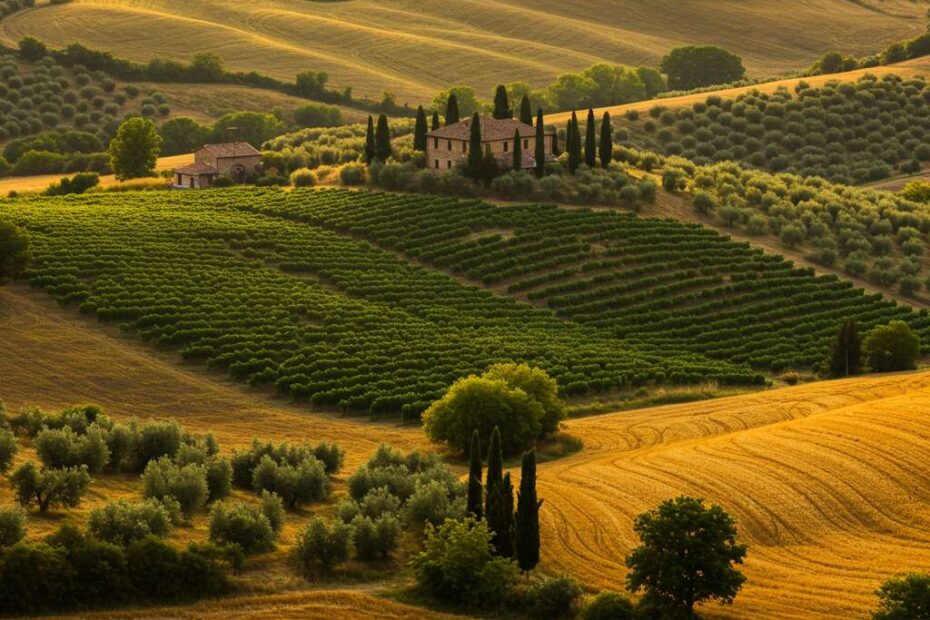Table of Contents
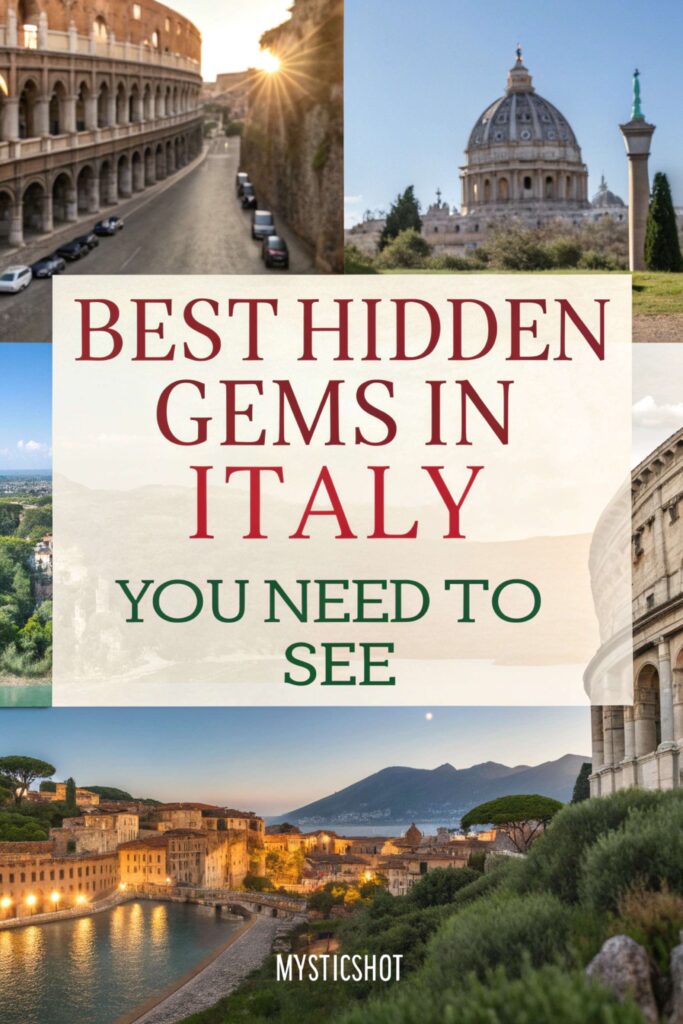
Italy is famous for its stunning cities like Rome, Venice, and Florence, but beyond the tourist hotspots lies best hidden gems in Italy you need to see.
From charming medieval villages to breathtaking coastal escapes, these lesser-known destinations offer a glimpse into Italy’s authentic beauty—without the crowds.
Whether you’re a history lover, nature enthusiast, or foodie, these underrated Italian destinations deserve a spot on your travel itinerary.
1. Civita di Bagnoregio – The Dying Town
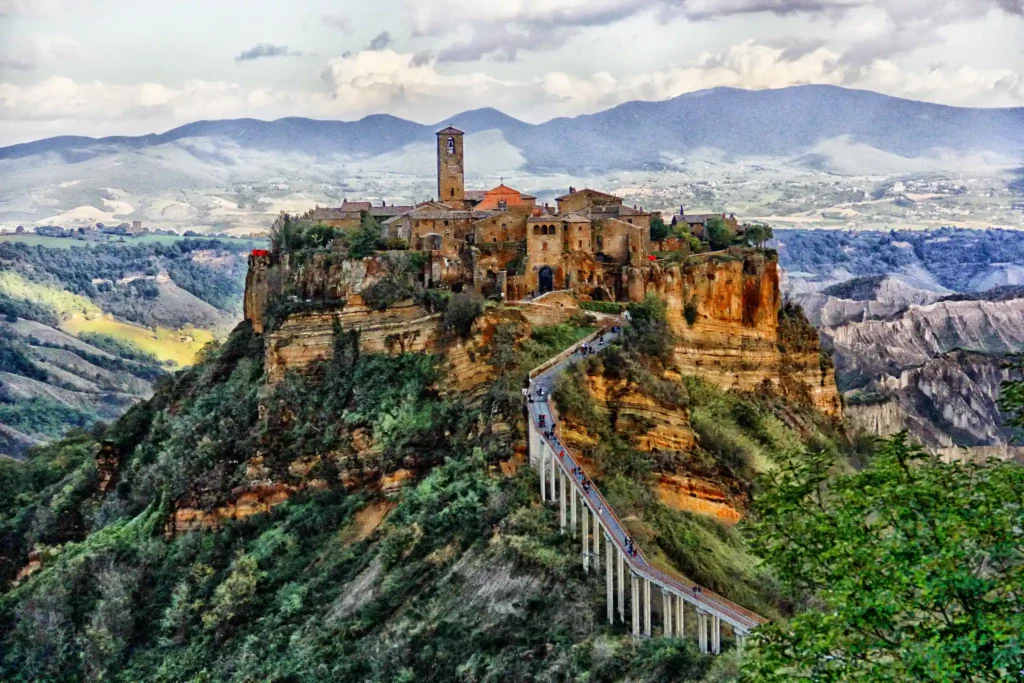
Perched high on a crumbling cliff in central Italy, Civita di Bagnoregio looks like something out of a fairy tale. The town, often called “the dying town”, is slowly being eroded by the elements, adding to its haunting beauty. The only way to reach Civita is by a long pedestrian bridge, which adds to the sense of stepping into another world. As you wander through its ancient stone streets, you’ll find charming courtyards, quiet piazzas, and breathtaking views of the surrounding valleys.
Despite its nickname, Civita is full of life, with small cafés, artisan shops, and even a few locals who still call it home. The town’s history dates back to the Etruscan era, and you can still see remnants of its ancient past in the rock-cut caves and archways. Visiting Civita feels like entering a medieval time capsule, untouched by modernity.
Why visit?
- Unforgettable scenery – One of the most unique and picturesque towns in Italy.
- Step back in time – Experience an ancient village with a magical, untouched atmosphere.
- Photographer’s dream – Stunning views, especially during sunrise and sunset.
2. Tropea – The Jewel of Calabria
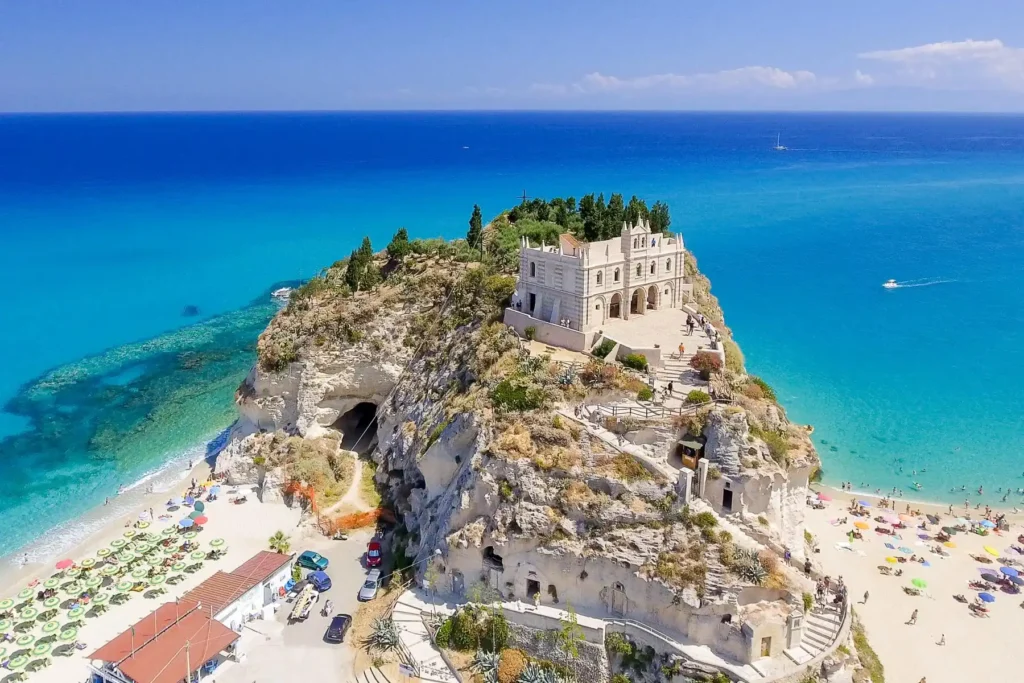
Nestled on the dramatic cliffs of southern Italy’s Calabria region, Tropea is an undiscovered coastal paradise. Unlike the crowded Amalfi Coast, Tropea offers pristine white-sand beaches, clear turquoise waters, and a relaxed, small-town charm. The town’s most famous landmark, the Sanctuary of Santa Maria dell’Isola, sits majestically atop a rocky outcrop, overlooking the sea like a fortress from a fantasy novel.
Tropea’s old town is a delight to explore, with its winding alleys, charming piazzas, and centuries-old buildings that still bear signs of the region’s long history. The town’s seaside restaurants serve some of the freshest seafood in Italy, and local specialties like ‘nduja (a spicy, spreadable sausage) add to the culinary experience.
Why visit?
- Gorgeous beaches – Crystal-clear waters and soft, golden sand.
- Authentic charm – A true southern Italian town with fewer tourists.
- Stunning cliffside views – One of the most beautiful coastal panoramas in Italy.
3. Orvieto – The Underground City
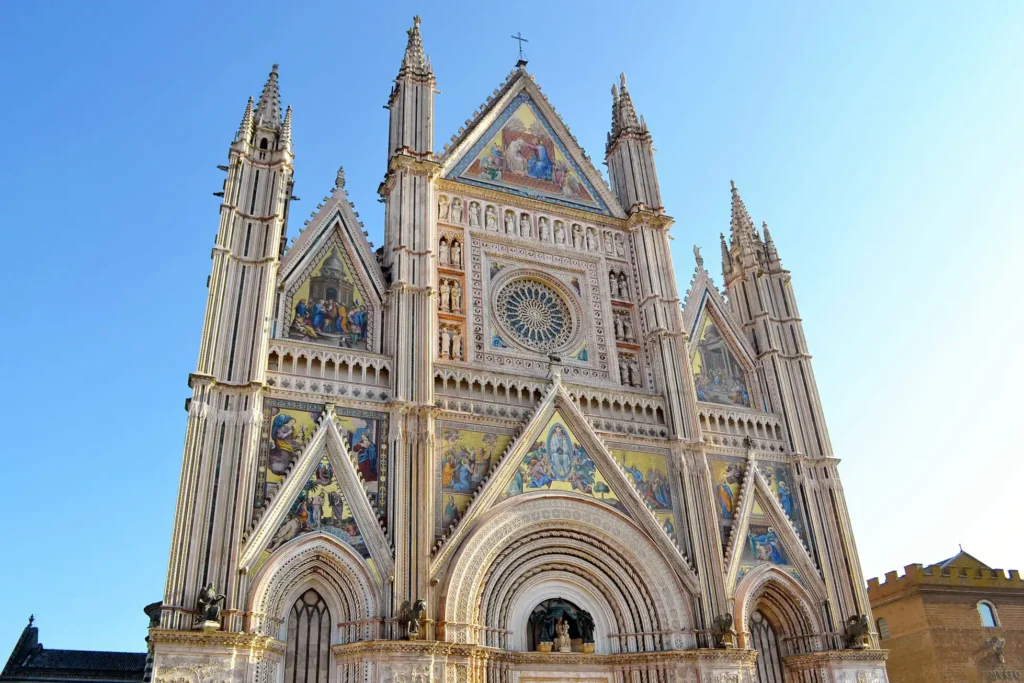
Sitting atop a volcanic rock plateau, Orvieto is one of Umbria’s most fascinating hidden gems. Its most striking landmark is the Orvieto Cathedral, a masterpiece of Gothic architecture with a golden mosaic façade that gleams in the sun. However, what makes Orvieto truly special lies beneath the surface—an underground city of tunnels, caves, and ancient passageways carved into the rock by the Etruscans over 2,500 years ago.
A visit to Orvieto’s underground reveals a labyrinth of wells, secret escape routes, and ancient storage rooms that once protected the city from sieges. Above ground, the town itself is full of charming streets, cozy cafés, and artisanal shops selling hand-painted ceramics.
Why visit?
- Mysterious underground city – Explore ancient tunnels and hidden passageways.
- Incredible architecture – Home to one of Italy’s most beautiful cathedrals.
- Amazing views – Perched high on a hill with sweeping countryside scenery.
4. Bosa – The Colorful Village of Sardinia
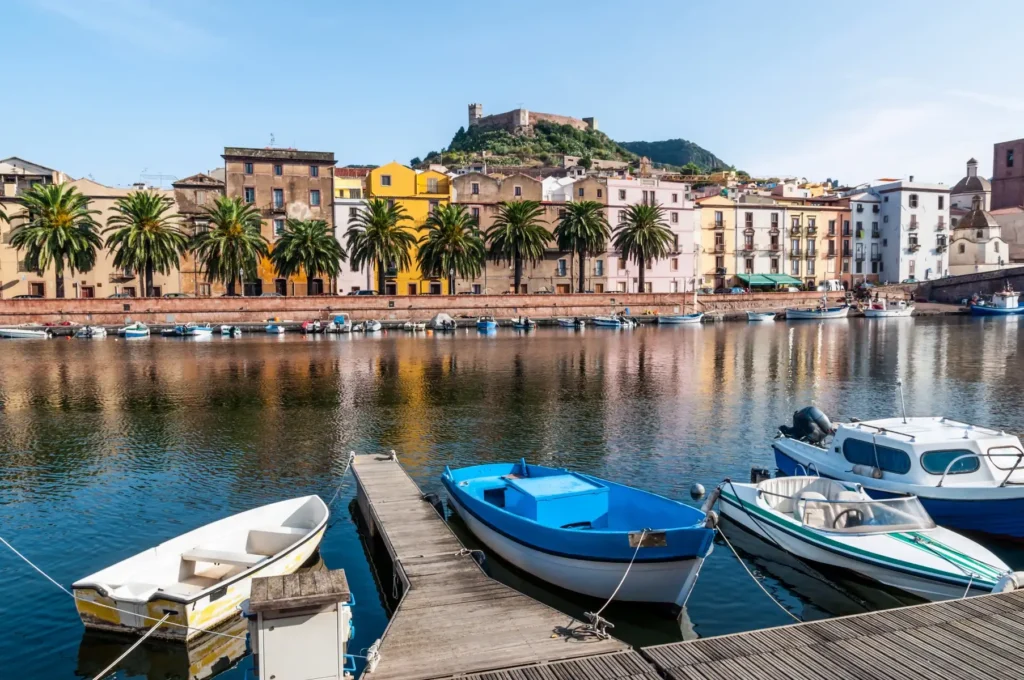
On the western coast of Sardinia, Bosa is one of Italy’s most colorful towns. Its vibrant pastel-colored buildings cascade down a hillside toward the Temo River, creating a postcard-perfect scene. At the top of the town sits the Malaspina Castle, which offers breathtaking views over the rooftops and the surrounding countryside.
Bosa’s charming streets are lined with family-run cafés, craft shops, and traditional bakeries selling Sardinian delicacies. Unlike the busy resorts in northern Sardinia, Bosa remains authentic and peaceful, offering visitors a real taste of island life. The nearby beaches, including Spiaggia di Bosa Marina, are some of the best in Sardinia, with crystal-clear waters and golden sands.
Why visit?
- Unique and colorful atmosphere – A hidden gem unlike any other in Italy.
- Historic charm – Medieval streets, a castle, and a picturesque river setting.
- Unspoiled beaches – Stunning coastline without the crowds.
5. Castelluccio – The Painted Hills of Umbria
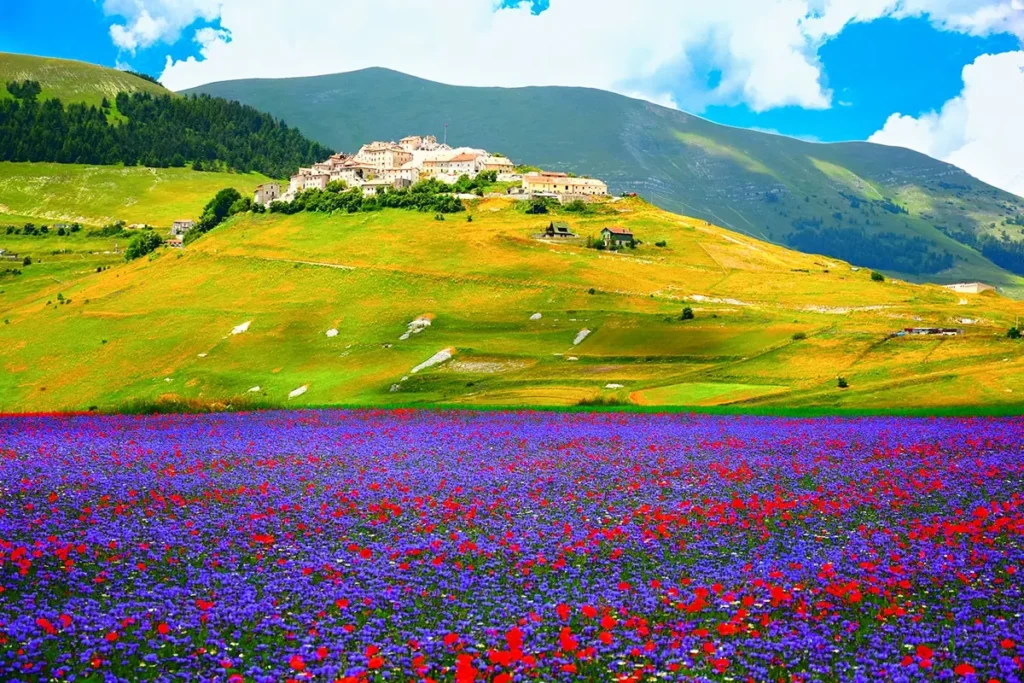
High in the Sibillini Mountains, Castelluccio is a tiny village famous for its breathtaking natural spectacle—the Fiorita, or flower bloom. Every spring and summer, the rolling plains surrounding the village transform into a stunning mosaic of red, yellow, purple, and blue wildflowers, creating one of Italy’s most breathtaking landscapes.
The village itself is quiet and remote, perfect for travelers looking to escape the hustle and bustle of city life. It’s an ideal spot for hiking, photography, and simply soaking in nature’s beauty. In the winter, Castelluccio becomes a serene snow-covered retreat, making it a year-round destination for outdoor enthusiasts.
Why visit?
- Perfect for outdoor lovers – Great for hiking, photography, and stargazing.reathtaking sea of color, making it a must-see for photographers and nature lovers.
- Breathtaking wildflower blooms – A stunning natural wonder.
- Peaceful mountain escape – Away from crowded tourist areas.
6. Procida – Italy’s Secret Island Escape
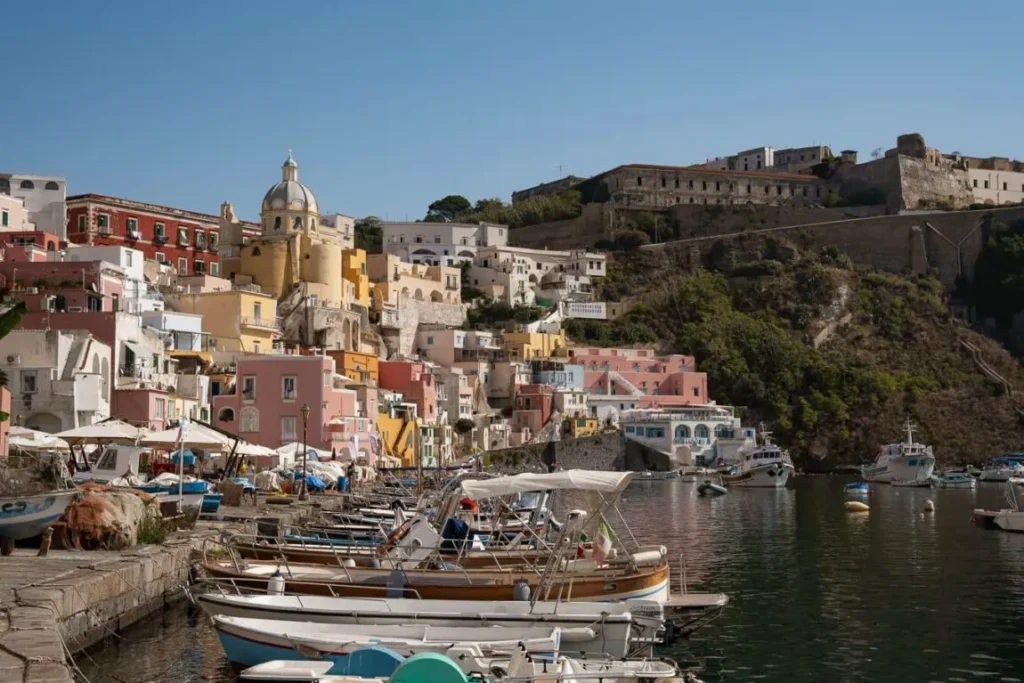
Tucked away in the Bay of Naples, Procida is a tiny island often overlooked in favor of its more famous neighbors, Capri and Ischia. However, Procida’s charming pastel-colored houses, quiet fishing villages, and unspoiled beaches make it a truly special place. The island exudes a laid-back, authentic Italian atmosphere, where locals gather in small piazzas and fresh seafood is served straight from the boats.
One of the most picturesque spots on the island is Marina Corricella, a postcard-perfect fishing harbor with cascading houses in hues of pink, yellow, and blue. Unlike the tourist-heavy destinations nearby, Procida feels like stepping back in time, where life moves at a slower pace. Strolling through the narrow alleyways, you’ll find hidden cafes, tiny artisan shops, and breathtaking sea views around every corner.
For beach lovers, Chiaiolella Beach offers golden sands and clear waters, perfect for a relaxing swim. The island’s small size makes it ideal for exploring by foot or scooter, with plenty of hidden spots to discover. Whether you’re looking for a romantic escape or a quiet retreat, Procida is one of Italy’s best-kept secrets.
Why visit?
- Authentic island charm – Experience an unspoiled, traditional Italian island.
- Breathtaking harbor views – The colorful houses of Marina Corricella are unforgettable.
- Quiet beaches – Relax on tranquil shores away from the crowds.
7. Pitigliano – Tuscany’s Stone Village
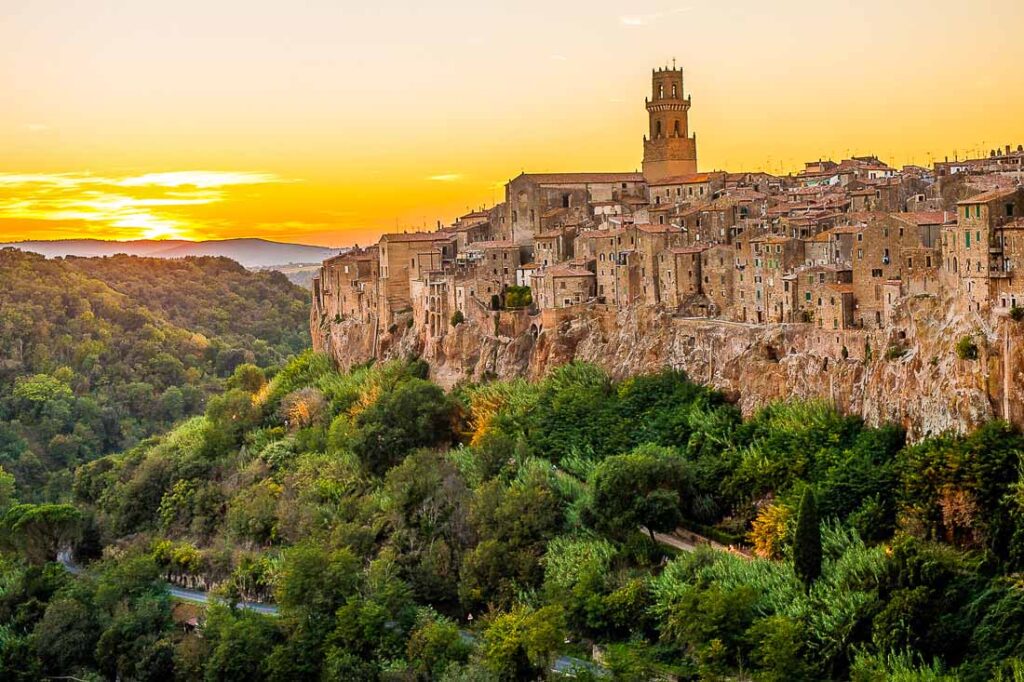
Known as “Little Jerusalem” due to its historic Jewish community, Pitigliano is a dramatic medieval village built atop sheer cliffs in southern Tuscany. Its golden stone houses blend seamlessly into the rock, creating a striking visual effect. Walking through the town feels like stepping into another era, with its labyrinth of cobbled streets, medieval archways, and hidden courtyards.
Pitigliano is home to fascinating historical sites, including the Orsini Fortress, which offers panoramic views of the surrounding countryside, and the Jewish Quarter, where you can explore an ancient synagogue, underground tunnels, and a historic bakery that still sells traditional kosher sweets. The town also boasts a rich Etruscan past, with mysterious cave dwellings and ancient tombs carved into the cliffs.
Nearby, the Vie Cave, a network of ancient Etruscan roads cut deep into the rock, offer a truly unique hiking experience. These shadowy passageways, once used for religious rituals and trade, provide an eerie yet mesmerizing journey through history.
Why visit?
- Breathtaking architecture – A medieval town dramatically built into cliffs.
- Fascinating history – Explore Etruscan, Jewish, and medieval heritage.
- Hidden hiking trails – The mysterious Vie Cave is a must-see for adventurers.
8. Sirmione – The Jewel of Lake Garda
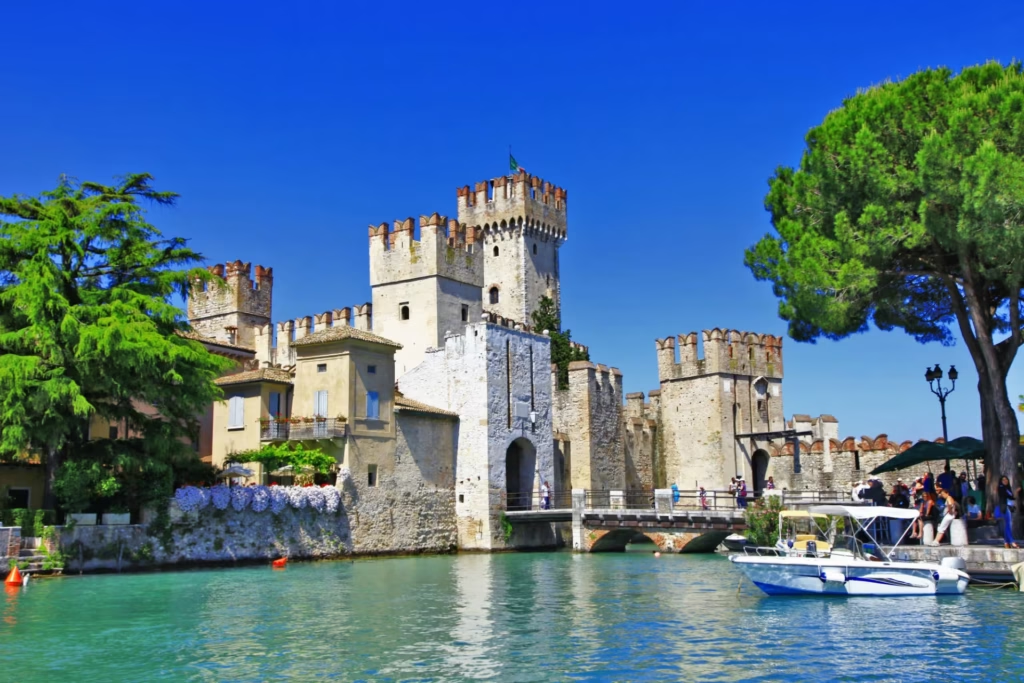
Located on a narrow peninsula extending into Lake Garda, Sirmione is a magical lakeside town known for its thermal hot springs, medieval castle, and Roman ruins. As you enter the town, you’ll pass through the gates of the Scaliger Castle, a stunning 13th-century fortress with fairy-tale towers and a picturesque drawbridge.
One of Sirmione’s biggest attractions is the Grotte di Catullo, the remains of an ancient Roman villa overlooking the shimmering waters of Lake Garda. This sprawling archaeological site offers breathtaking views and a glimpse into the luxurious lifestyles of the Roman elite. After exploring the ruins, you can unwind at Aquaria Thermal Spa, where mineral-rich waters provide a soothing escape.
Sirmione’s charming streets are lined with gelato shops, boutiques, and waterfront restaurants. For a truly special experience, take a boat ride around the Sirmione Peninsula, where you’ll see the castle from the water and even catch a glimpse of an underwater hot spring bubbling up beneath the lake’s surface.
Why visit?
- Lakeside beauty – Stunning scenery and crystal-clear waters.
- Rich history – Medieval castles and ancient Roman ruins.
- Relaxing thermal spas – Perfect for a wellness getaway.
9. Campo Imperatore – The Little Tibet of Italy
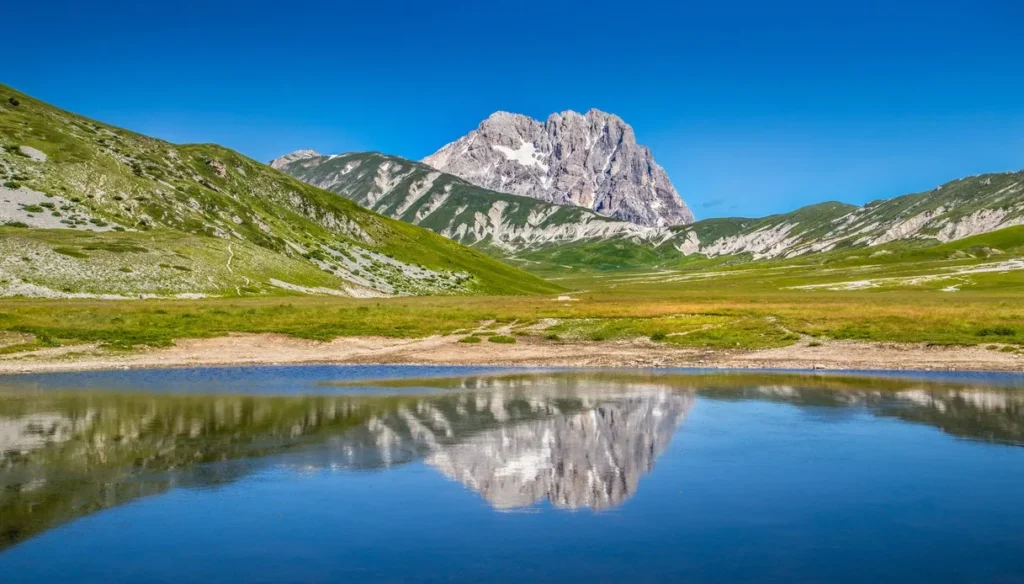
Located in the Abruzzo region, Campo Imperatore is an otherworldly plateau surrounded by the rugged peaks of the Gran Sasso mountains. Often called the “Little Tibet of Italy,” this vast, open landscape feels completely untouched, offering panoramic views, wildflower-filled meadows, and starry night skies.
Historically, Campo Imperatore was a grazing ground for shepherds and their flocks, and even today, you’ll see sheep and cows roaming freely across the plateau. The area is famous for its high-altitude cheese and cured meats, making it a great place to enjoy an authentic Italian picnic. In the winter, it transforms into a snowy wonderland, attracting skiers and snowboarders.
One of the most interesting historical sites here is the Hotel Campo Imperatore, where dictator Benito Mussolini was imprisoned before his dramatic rescue in 1943. Despite its remote feel, Campo Imperatore is easily accessible and makes for an unforgettable off-the-beaten-path adventure.
Why visit?
- Breathtaking landscapes – Vast, untouched wilderness with stunning mountain views.
- Rich history – The site of Mussolini’s imprisonment and rescue.
- Perfect for nature lovers – Hiking, stargazing, and winter sports.
10. Sperlonga – A Secret Beach Paradise
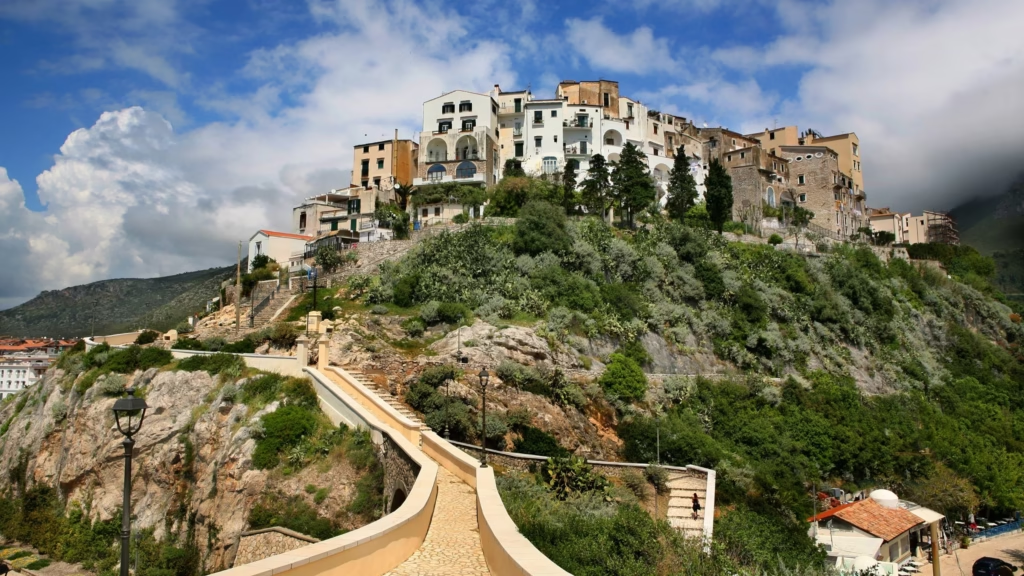
Nestled between Rome and Naples, Sperlonga is a breathtaking coastal village that remains one of Italy’s best-kept secrets. Unlike the overcrowded Amalfi Coast, this charming town offers pristine whitewashed houses, hidden coves, and crystal-clear waters, making it an ideal escape for those who want a peaceful seaside retreat. The town’s picturesque old center is a maze of narrow alleys, flower-covered balconies, and stunning sea views, creating a postcard-perfect setting for relaxation.
Beyond its visual appeal, Sperlonga is home to some of the most unspoiled beaches in Italy, including the Blue Flag-awarded Spiaggia di Levante and Spiaggia di Ponente. These soft, sandy shores are perfect for sunbathing, swimming, and family-friendly outings, with shallow, calm waters ideal for kids. The nearby Tiberius Grotto, an ancient Roman cave adorned with marble sculptures, adds an element of history to your visit.
Sperlonga is also an excellent base for day trips to Rome, Naples, or the Pontine Islands, making it a strategic location for travelers who want to experience both culture and relaxation. Unlike more famous coastal towns, it retains an authentic Italian charm, where you can stroll along the waterfront promenade, enjoy fresh seafood in family-run trattorias, and watch the sunset over the Tyrrhenian Sea.
Why visit?
- Undiscovered coastal gem with fewer crowds than the Amalfi Coast.
- Beautiful sandy beaches with Blue Flag certification.
- Rich history, including the Emperor Tiberius’ cave and villa.
11. Monte Isola – The Largest Lake Island in Europe
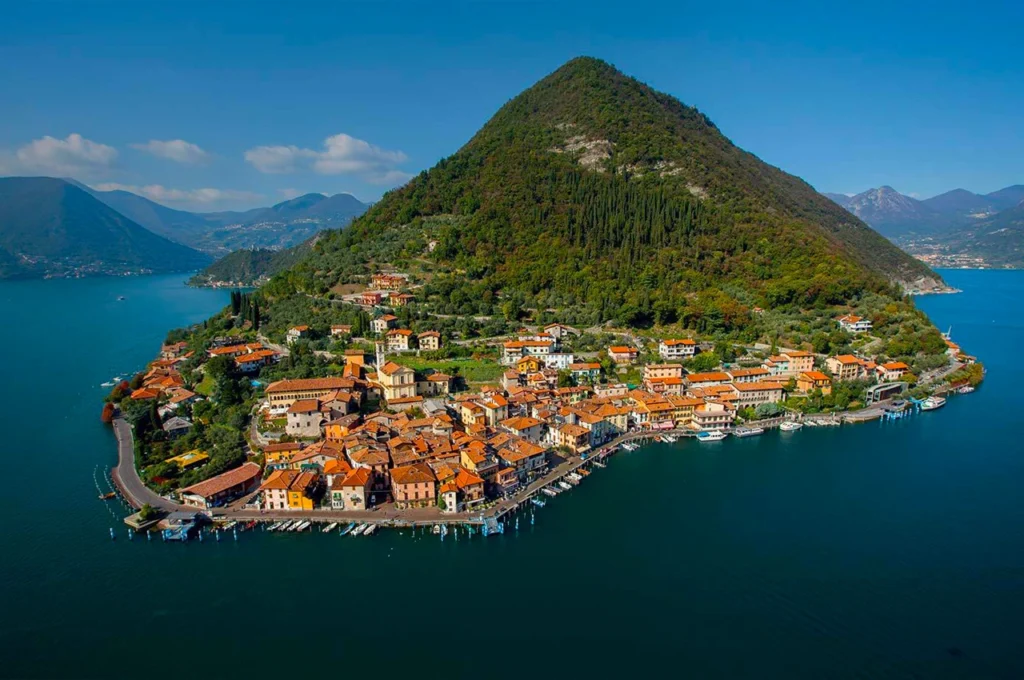
Floating in the serene waters of Lake Iseo, Monte Isola is the largest inhabited lake island in Europe and one of Italy’s most enchanting hidden treasures. Unlike the more famous Lake Como or Lake Garda, this picturesque island remains peaceful, car-free, and refreshingly untouched by mass tourism. Arriving by ferry, visitors are greeted by colorful fishing villages, medieval churches, and panoramic trails that offer stunning views of the lake and surrounding mountains.
Monte Isola is perfect for hiking, cycling, and leisurely exploration. The entire island can be explored on foot or by bike, with scenic paths leading through olive groves, chestnut forests, and quiet hamlets. One of the highlights is the climb to the Santuario della Madonna della Ceriola, a 13th-century sanctuary perched at the island’s highest point, offering a breathtaking 360-degree view of Lake Iseo.
Aside from its natural beauty, Monte Isola is famous for its traditional cuisine, particularly sun-dried sardines, fresh lake fish, and locally produced olive oil. The slower pace of life here makes it an excellent escape for those who want to unwind, take in stunning views, and experience authentic Italian village life away from the crowds.
Why visit?
- Peaceful, car-free island perfect for a relaxing retreat.
- Spectacular lake and mountain views from scenic trails.
- Authentic local cuisine, including fresh lake fish and olive oil.
12. Civita Castellana – A Hidden Architectural Gem
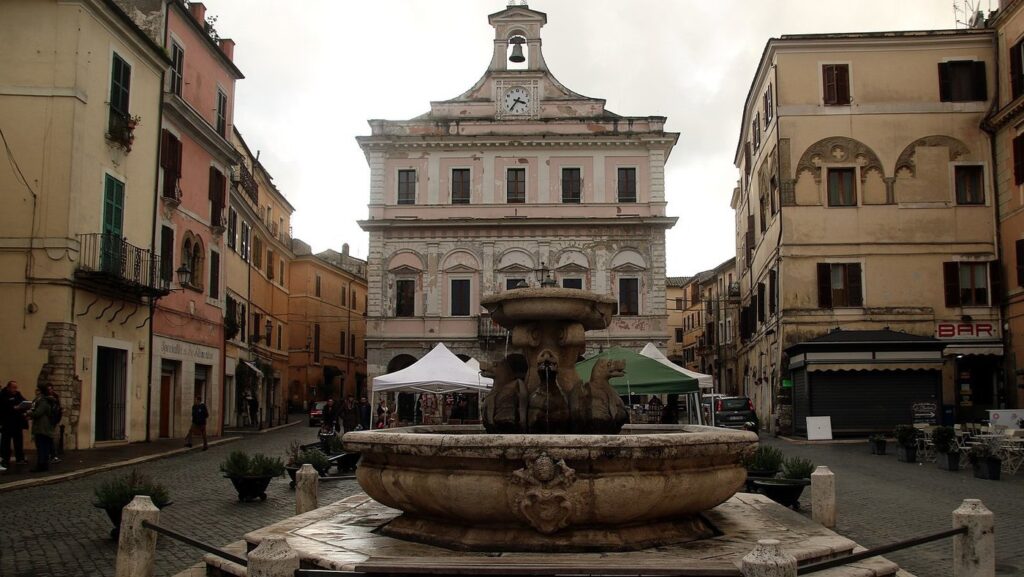
Just an hour north of Rome, Civita Castellana is a town steeped in history, yet often overlooked by travelers heading to more well-known destinations. Perched on a dramatic tuff cliff, the town is a blend of medieval streets, ancient Etruscan ruins, and Renaissance architecture. Its charming historic center, with cobblestone alleys and colorful buildings, makes it a dreamlike setting for those seeking an off-the-beaten-path Italian experience.
One of the town’s most impressive sites is the Forte Sangallo, a 15th-century fortress built by Pope Alexander VI and later used as a defensive stronghold for the Papal States. The fortress offers stunning views of the surrounding valleys and houses an archeological museum showcasing Etruscan artifacts found in the area. Civita Castellana’s bridges, including the spectacular Ponte Clementino, make for incredible photo opportunities, spanning deep gorges carved by the Treja River.
Beyond its architectural wonders, Civita Castellana is an excellent base for outdoor activities, including hiking, horseback riding, and visiting the nearby Monte Soratte Nature Reserve. Whether you’re a history enthusiast, a nature lover, or simply in search of an authentic Italian town untouched by mass tourism, this gem is worth a visit.
Why visit?
- Scenic landscapes perfect for outdoor adventures.stination for history lovers.
- Historic charm with medieval streets and Renaissance architecture.
- Forte Sangallo fortress and its fascinating archaeological museum.
13. Scanno – The Village of Love
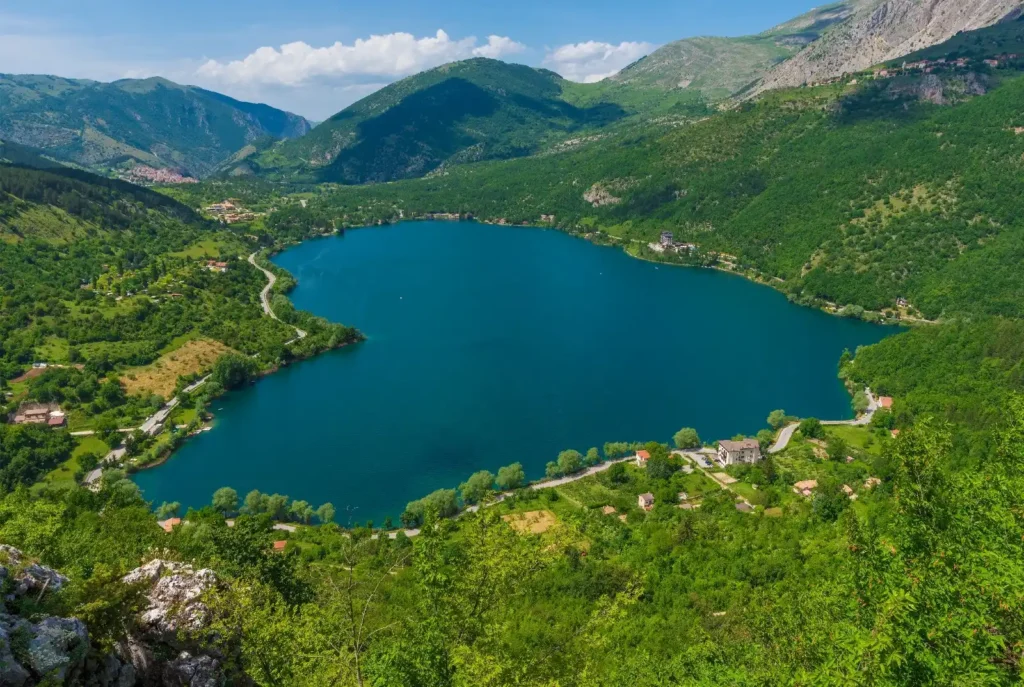
Tucked away in the Abruzzo mountains, Scanno is a stunning medieval village known for its heart-shaped lake, centuries-old traditions, and picturesque stone streets. Surrounded by the Majella National Park, the village offers breathtaking views of the rugged mountains, dense forests, and pristine alpine lakes, making it a perfect getaway for nature lovers. Unlike mainstream tourist destinations, Scanno remains authentic and serene, preserving its historical charm and local traditions.
One of the most iconic sights in Scanno is Lago di Scanno, a natural heart-shaped lake that has earned the village its reputation as the “Village of Love.” Visitors can take scenic boat rides, go hiking along the surrounding trails, or simply relax by the tranquil waters. In town, wandering through the narrow, winding alleys feels like stepping back in time. Scanno is also famous for its women’s traditional costumes, which are still worn during local festivals, and its handcrafted gold filigree jewelry, making it a great place to find unique souvenirs.
For outdoor enthusiasts, the surrounding area offers excellent hiking and wildlife spotting, including the chance to see Apennine wolves, chamois, and golden eagles. Whether you come for the romantic scenery, the rich history, or the untouched natural beauty, Scanno is an unforgettable destination.
Why visit?
- Lago di Scanno’s heart-shaped lake, a symbol of romance.
- Charming medieval village with preserved traditions.
- Incredible hiking and nature experiences in Majella National Park.
14. Pitigliano – The Little Jerusalem of Italy
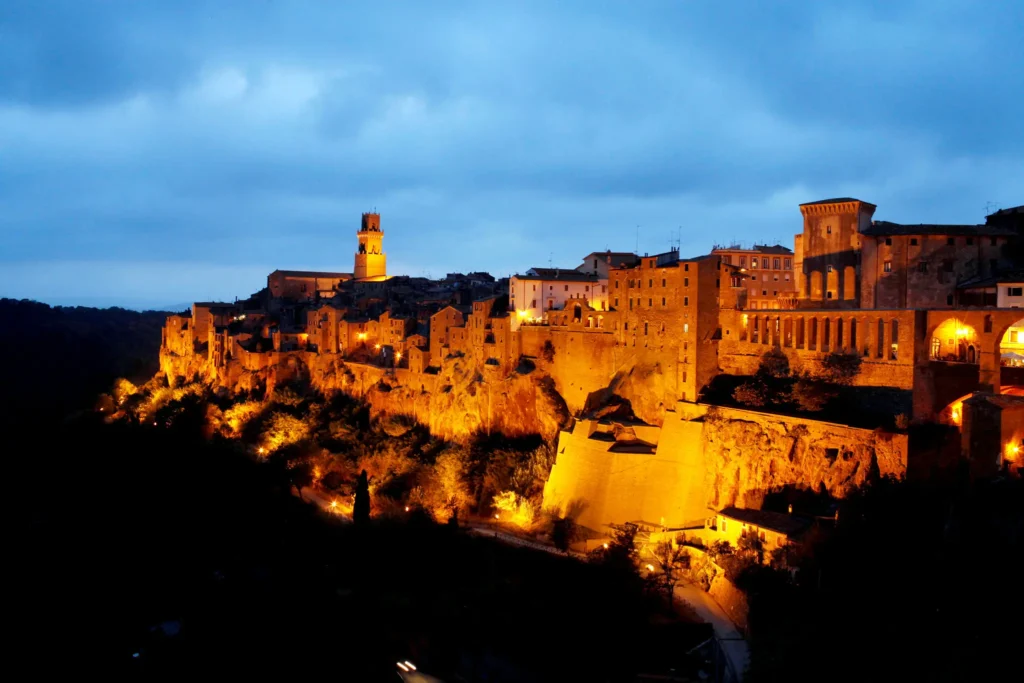
Carved into tuff rock cliffs, Pitigliano is one of Italy’s most striking hilltop villages, often called the “Little Jerusalem” due to its rich Jewish heritage. As you approach, the town seems to rise from the rocks, creating a dramatic and unforgettable first impression. Its ancient Etruscan origins, medieval streets, and cave dwellings make it one of Italy’s most unique hidden gems.
Pitigliano’s historic Jewish Quarter is a must-visit, featuring a beautifully preserved synagogue, a Jewish museum, and an ancient bakery that still makes traditional Jewish-Italian sweets. The town is also dotted with Etruscan tombs and caves, which can be explored on guided tours. Wandering through its stone-paved alleys, hidden tunnels, and terraced gardens gives visitors a sense of timelessness, as if they’ve traveled centuries into the past.
The surrounding area is rich in hot springs, nature trails, and scenic drives, making it an ideal stop for those looking to experience Tuscany beyond the usual tourist spots. The nearby Saturnia Hot Springs are just a short drive away, offering visitors a chance to soak in natural thermal baths under the open sky. Whether you’re interested in history, culture, or relaxation, Pitigliano has something special to offer.
Why visit?
- Breathtaking hilltop village carved into tuff rock.
- Fascinating Jewish Quarter with deep cultural heritage.
- Close to Saturnia’s famous thermal baths for ultimate relaxation.
15. Noto – The Baroque Beauty of Sicily
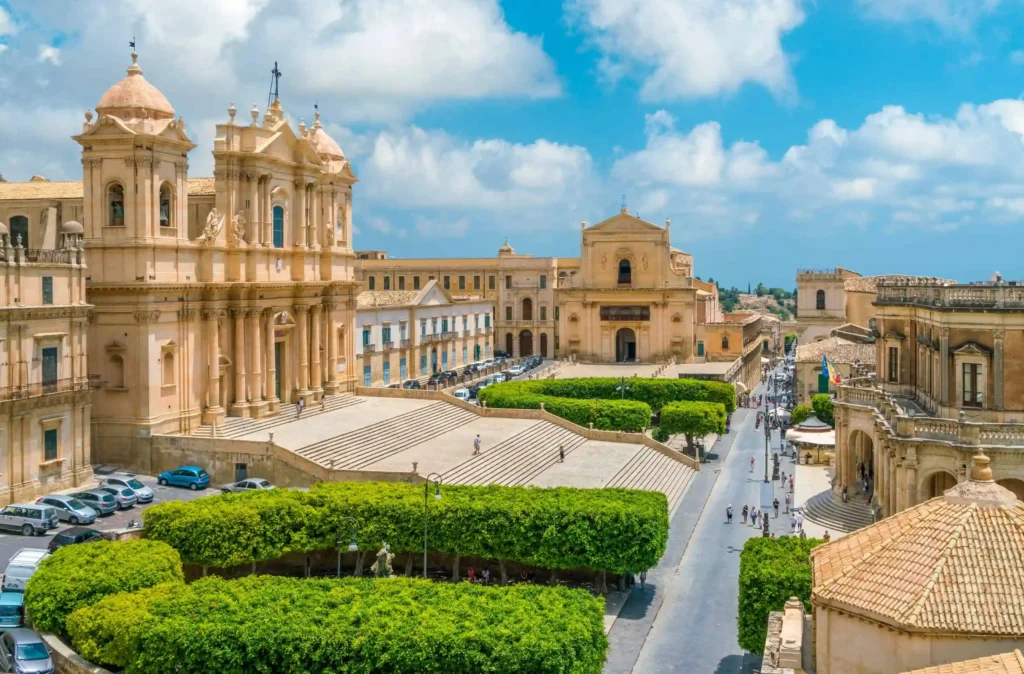
Located in southeastern Sicily, Noto is a UNESCO-listed town renowned for its golden-hued Baroque architecture, elegant piazzas, and ornate churches. Often overshadowed by more famous Sicilian destinations like Palermo or Taormina, Noto is an underrated gem that offers a quieter, more immersive experience. Walking through its grand streets feels like exploring a beautifully crafted movie set, with every building glowing in the warm Sicilian sunlight.
The Cattedrale di San Nicolò, Noto’s most iconic landmark, dominates the skyline with its stunning façade and impressive interior. Alongside it, other masterpieces of Baroque architecture, such as Palazzo Ducezio and the Church of San Domenico, showcase the artistic brilliance of the 18th century. The town’s Corso Vittorio Emanuele, lined with elegant cafés and artisan shops, is perfect for a leisurely stroll, gelato in hand.
Beyond its beauty, Noto is also a gateway to some of Sicily’s best beaches and nature reserves. Just a short drive away, the Vendicari Nature Reserve offers pristine beaches, crystal-clear waters, and diverse wildlife, including flamingos and sea turtles. Whether you’re a history buff, an architecture lover, or a beachgoer, Noto is a hidden treasure waiting to be explored.
Why visit?
- Close to Vendicari’s untouched beaches and nature reserve.
- UNESCO-listed Baroque architecture that feels like an open-air museum.
- Authentic Sicilian charm with fewer crowds than major cities.
Best Time to Visit
The best time to explore Italy’s hidden gems depends on the region and the type of experience you’re looking for. Generally, spring (April to June) and fall (September to October) offer the best balance of pleasant weather, fewer crowds, and vibrant scenery. Spring brings blooming flowers and mild temperatures, making it perfect for coastal towns, countryside villages, and hiking trails. Fall, on the other hand, showcases beautiful autumn colors in Tuscany and the Alps, while offering ideal conditions for exploring historical towns without the summer heat.
For island destinations like Procida, the best time is late spring to early fall when the waters are warm and the beaches are inviting. If you plan to visit Campo Imperatore for winter activities, the snowy months from December to March are the most suitable. No matter when you go, these lesser-known destinations allow you to enjoy Italy without the overwhelming tourist crowds found in the major cities.
Things to Do
Italy’s hidden gems offer a wide range of activities for every type of traveler. History lovers can explore the ancient ruins of Sirmione, the Etruscan tombs of Pitigliano, or the medieval streets of Civita di Bagnoregio.** Nature enthusiasts** can hike through the dramatic landscapes of Campo Imperatore, wander along the breathtaking coastal paths of Tropea, or relax by the tranquil waters of Lake Iseo.
If you’re looking for a more laid-back experience, consider taking a boat ride in Procida, soaking in the thermal springs of Sirmione, Many of these destinations also offer unique cultural experiences, like traditional festivals, artisan workshops, and historical reenactments, allowing you to immerse yourself in the local way of life.
For those who enjoy off-the-beaten-path adventures, take a drive along Abruzzo’s scenic roads, explore the underground tunnels in Pitigliano, or discover the mysterious Vie Cave—an ancient network of pathways carved by the Etruscans. No matter your interests, these hidden gems promise authentic experiences away from the usual tourist hotspots.
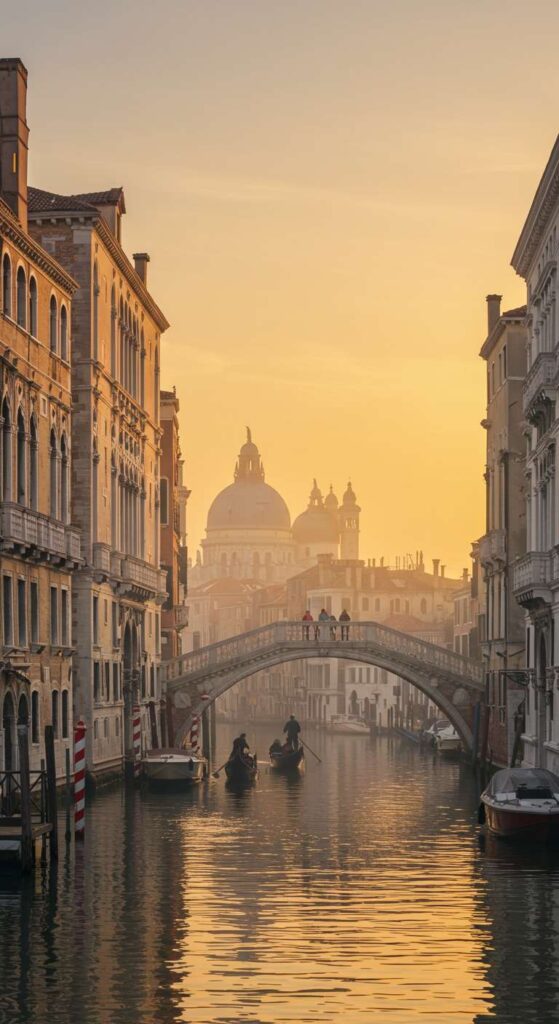
Family-Friendly Activities
Traveling with kids? These hidden destinations offer plenty of family-friendly activities that are both fun and educational. Children will love exploring the storybook-like castles of Sirmione, running through the meadows of Campo Imperatore, or spotting colorful fishing boats in Procida. Many of these locations provide gentle hiking trails, interactive museums, and hands-on experiences, making them ideal for families.
For a memorable family adventure, head to Lake Iseo, where you can take a ferry to Monte Isola, a car-free island perfect for cycling and picnicking. In Pitigliano, families can explore the ancient caves and underground passages, learning about Italy’s mysterious past. If you’re visiting in the summer, a trip to Tropea’s beaches is perfect for kids who love swimming and playing in the sand.
Several towns also host seasonal festivals that children will enjoy, such as historical parades, food fairs, and light shows. Whether your family loves nature, history, or simply relaxing in beautiful surroundings, these destinations provide a more relaxed and immersive travel experience compared to Italy’s crowded tourist hotspots.
Travel Tips
To make the most of your trip to Italy’s hidden gems, keep these travel tips in mind:
- Plan your transportation – Many of these destinations are not easily accessible by public transport, so renting a car is often the best option.
- Book accommodations early – Since these areas have fewer hotels, it’s a good idea to reserve your stay in advance, especially during peak seasons.
- Pack comfortable shoes – Many towns have cobblestone streets, steep hills, or hiking trails, so good walking shoes are essential.
- Learn basic Italian phrases – In smaller towns, English might not be widely spoken, so knowing a few key phrases can be helpful.
- Respect local customs – Some destinations have religious or cultural traditions that visitors should be mindful of, such as dress codes for churches and historic sites.
For solo travelers or those looking for more in-depth safety advice, check out our guide on 15 Solo Travel Tips for additional insights.

Where to Stay
While these hidden gems might not have large international hotels, they offer charming boutique stays, family-run guesthouses, and scenic agriturismos (farm stays).
- Procida – Stay in a seaside guesthouse for stunning views of the harbor.
- Pitigliano – Choose a historic stone inn with a view of the cliffs.
- Sirmione – Book a lakefront hotel with access to thermal baths.
- Campo Imperatore – Try a mountain lodge for an unforgettable alpine experience.
- Tropea – Stay in a cliffside hotel overlooking the turquoise sea.
For those who prefer more immersive experiences, consider staying in a countryside villa, a cozy B&B, or even a castle hotel. Many of these accommodations offer local cuisine, guided tours, and personalized experiences, making your trip even more special.
FAQs
Q: What is the best way to travel between these hidden destinations in Italy?
A: The most convenient way is by rental car, as many of these locations are not well-connected by public transportation. Some coastal and lake destinations also have ferries available.
Q: Are these locations budget-friendly?
A: Yes! Many of these destinations are more affordable than Italy’s major tourist hotspots. Accommodations, dining, and activities often come at a lower cost, making them great for budget travelers.
Q: Is English widely spoken in these places?
A: In smaller towns, English may not be as commonly spoken as in big cities. Learning some basic Italian phrases can be helpful for navigating and communicating with locals.
Q: What should I pack for a trip to these destinations?
A: Comfortable walking shoes, light clothing for summer, layers for cooler months, a translator app or phrasebook, and a camera to capture the stunning views!
Q: Are these destinations safe for solo travelers?
A: Absolutely! These places are known for their friendly locals and relaxed atmosphere. Just follow standard travel safety precautions and enjoy your adventure.
Best Hidden Gems in Italy You Need to See
Italy is full of world-famous destinations, but sometimes, the real magic lies in its lesser-known gems. Whether you’re drawn to medieval villages, stunning coastlines, or breathtaking landscapes, these off-the-beaten-path locations provide an unforgettable and authentic Italian experience.
Italy is full of hidden treasures waiting to be explored. For even more off-the-beaten-path destinations and travel tips, visit Italy’s official tourism website and start planning your next adventure!
Have you visited any of these hidden gems? Or do you have your own secret Italian getaway? Share your thoughts in the comments below—I’d love to hear about your favorite hidden spots in Italy!
